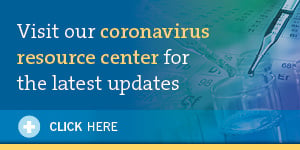As “stay-at-home” orders approach expiration or are lifted, it appears that a return to the workplace through “phasing-in” is rapidly approaching. Employers must now anticipate how to prevent the introduction and spread of COVID-19 upon the resumption of operations. There is no one-size-fits-all approach, and an Equal Employment Opportunity Commission (EEOC)-recommended workplace hazard assessment will be key in determining the best way to allow employees to return to work as safely as possible.1 Approaches to ensuring compliance with the Occupational Safety and Health Administration (OSHA) general duty clause (which mandates that employers provide a safe working environment)2 will universally include increased sanitation practices, strict policies and procedures around the reporting of illness and exclusion of sick employees from the workplace, and social distancing requirements, as well as, in many instances, the provision and required use of personal protective equipment (PPE). Beyond these preventative measures, many employers are also contemplating how (and whether) to require or offer COVID-19 testing of employees as a condition to returning to the office, or as an ongoing protective measure in the workplace. Some employers are considering testing as a way of promoting “peace of mind,” so that employees are assured that they and their colleagues are at decreased risk of workplace infection, while other employers are more focused on testing as a method of more accurate workplace contact assessment when a COVID-19 case appears in the workplace. Yet such testing presents complex questions. Described below are key considerations and questions for employers to keep in mind when considering introducing COVID-19 testing as a measure required of, or offered to, employees.
1. Requiring Testing of Employees. Absent state guidance to the contrary, employers may require COVID-19 testing as a condition of returning to the workplace. In general, the Americans with Disabilities Act requires that any mandatory medical test of employees be “job related and consistent with business necessity.”3 The EEOC issued guidance on April 23, 2020 clarifying that, under this standard, employers may take steps to determine if employees entering the workplace have COVID-19, including required testing for infection with the virus.4 The EEOC guidance notes that employers should ensure that testing be accurate and reliable (taking into account the frequency of false positives or false negatives associated with an applicable test).5 As discussed below, the availability of testing remains inconsistent across states, and what testing is available in some cases lacks independently verified demonstration of its accuracy. In light of the EEOC’s guidance, employers may wish to focus first on protective measures (such as environmental controls, workplace conduct rules and PPE) before relying on testing as a gatekeeper for allowing employees to return to the workplace and remain there. If an employer does elect to employ a testing program, it should adopt a written policy that describes (at a minimum) the circumstances under which testing will be required or offered, the consequences of a positive test result, and the employer’s procedures for maintaining as confidential the results of any test.
2. Testing Quality and Consistency. Currently, there is no Food and Drug Administration (FDA)-approved COVID-19 test. Instead, FDA is issuing emergency use authorizations (EUA) for the marketing and use of authorized commercial test kits and laboratory developed tests (LDT) to diagnose COVID-19 or identify the presence or absence of antibodies while there are no adequate, approved, and available alternatives. FDA is also exercising enforcement discretion with respect to the marketing and use of certain COVID-19 tests pending an EUA request or, in some cases, without the laboratory or test manufacturer ever requesting an EUA.
There two primary categories of tests available for use. Molecular-based tests analyze amplified RNA from a variety of specimen types (e.g., nose/throat swabs or saliva) to identify active virus, are the most frequently used COVID-19 tests, and are the most accurate at determining current infection status.6 Serological tests detect the presence of antibodies against SARS-CoV-2 in serum, plasma, or whole blood, which may be indicative of a current or recent infection, but cannot diagnose acute infection. Serological tests should be used with caution due to accuracy concerns and insufficient evidence at this time that persons who have been exposed to COVID-19 (as determined by testing positive for antibodies) have any degree of immunity to re-infection.7 Although FDA has recently taken steps to improve the quality of commercially available serological tests,8 most employers and other institutions considering offering or requiring testing are focused on molecular diagnostic tests.
Because the performance data required for an EUA is generally less rigorous than would be required for typical FDA approval or “510(k)” clearance, the quality of the tests may not be assured. Early reports have suggested that certain available tests may yield a significant number of false positives or false negatives.9 While a false positive would merely result in an employer taking an overly conservative approach with an employee (which likely is not problematic provided there is no adverse employment consequence), a false negative could allow an infected individual into the workplace – although enhanced PPE, revised work rules (such as social distancing), and environmental controls could reduce the risk of transmission of infection from an actively infected employee.
Employers should ensure that any laboratory or vendor contracted to perform COVID-19 tests on employees holds appropriate Clinical Laboratory Improvement Amendments (CLIA) certification (or is licensed in a state that maintains certification standards equivalent to or more rigorous than CLIA) to perform clinical testing that can be relied upon for clinical decision-making. Most currently-available tests may be performed only by a laboratory that is CLIA certified to perform moderate or high complexity tests, although there is some flexibility in the setting in which test specimens may be collected from patients. To date, only three point-of-care tests have been authorized for use in patient care settings operating under a CLIA Certificate of Waiver,10 and only one test has been authorized for self-collected samples “at home” using a specific cotton nasal swab that is shipped to the laboratory for testing.
4. Access to Testing. In some limited situations, COVID-19 testing may be available without a health care provider’s evaluation and referral, but, generally, any COVID-19 testing requires that a licensed physician issue a testing order to a certified clinical laboratory. It appears that many commercial employee health vendors offering testing services to employers understand this requirement, and have incorporated it into their programmatic offerings, with an employed physician issuing such a lab order for each employee being tested. Yet access to testing in hard-hit areas remains a challenge.11 Before deciding to require or offer testing as a return-to-work strategy, employers must consider whether they and their employees will be able to access tests in sufficient quantity to serve as one part of an effective workplace strategy for infection control.12
5. Testing Privacy Considerations. Employers should know that laboratories subject to HIPAA may not disclose a patient’s lab test results to an employer unless specifically authorized by the employee/patient in writing to do so.13 Employers therefore may wish to develop authorization forms for employees to review and sign when they interact with entities (such as commercial employee health program vendors) arranging testing and laboratories performing the COVID-19 test; only through such written authorizations can the employer receive employee test results directly and take any necessary precautions for the employee and the workplace as a whole. Additionally, the results of any medical testing must be maintained as a confidential medical record that is kept apart from personnel records,14 and should be disclosed only to the extent strictly necessary for workplace management and safety.
6. Summary Checklist of Considerations. As explained above, for an employer to offer or require that employees undergo COVID-19 infection testing may provide some peace of mind to workforces and to supervisors, and has the potential to make contact assessment more efficient and accurate. At the same time, implementing a testing regime requires careful analysis of specific regulatory, occupational health, health privacy, ethics and logistics issues. An employer considering offering such testing should anticipate, and have answers to, the following questions:
- What commercial entity or health provider will arrange and offer the testing and at what cost;
- Whether the testing will be mandatory or merely offered;
- The frequency of additional testing beyond baseline return-to-work testing, given that testing demonstrates only infection at the time of testing – or in other words, at what intervals will employees be required to test, or will be offered testing;
- What consent and authorization/release of records forms employees being tested will be offered to read and sign;
- Whether, in workplaces in which English may not be a primary language, such forms must be offered in other languages, such as Spanish and Mandarin;
- Whether the employer will pay for the testing program directly, or whether the testing will be reimbursed by employer-provided health plans;
- What laboratory will perform the testing, whether the lab has the appropriate clinical lab certification, the degree to which its testing has been adequately validated, and whether the lab can be relied upon to report positive results to local and state health departments, as required by law;
- Where testing will be offered (at the employment site or requiring employees to travel to test sites);
- The identity of the licensed physician under whose name the testing will be ordered;
- How employees will receive results and what counseling and health care referrals will be made available, in particular to those with positive results;
- Whether only the tested employee will receive testing results (thus making the employer rely on self-reports of positive test results); or whether the employer will also receive results, and, if so, how;
- How positive test results for an individual will be handled as an employment matter – what work processes and return-to-work requirements will be applied, including whether a negative test will be required for that employee’s return to work; and
- How a positive result will be handled for workplace contact assessment and contact tracing purposes – in other words, how will assessment be performed for close contacts of a diagnosed case and who will perform that assessment.
- See U.S. Dep’t. of Labor, Occupational Safety and Health Admin., Guidance on Preparing Workplaces for COVID-19 22, available at https://www.osha.gov/Publications/OSHA3990.pdf.
- Each employer shall furnish to each of his employees employment and a place of employment which are free from recognized hazards that are causing or are likely to cause death or serious physical harm to his employees. 29 U.S.C. § 654.
- See 29 C.F.R. § 1630.14.
- What You Should Know about COVID-19 and the ADA, the Rehabilitation Act, and Other EEO Laws, U.S. Equal Emp’t. Opportunity Comm’n. (April 23, 2020), available at https://www.eeoc.gov/eeoc/newsroom/wysk/wysk_ada_rehabilitaion_act_coronavirus.cfm.
- Id.
- Clifford Colby, Coronavirus Antibody, Nasal Swab, Saliva Testing: What to Know About COVID-19 Tests, CNET (April 26, 2020), https://www.cnet.com/how-to/coronavirus-antibody-nasal-swab-saliva-testing-what-to-know-about-covid-19-tests/.
- Michael Greenwood, Saliva Samples Preferable to Deep Nasal Swabs for Testing COVID-19, YaleNews (April 24, 2020), https://news.yale.edu/2020/04/24/saliva-samples-preferable-deep-nasal-swabs-testing-covid-19; but see Eden David, A Reality Check on Antibody Testing: How Do We Race Forward Thoughtfully?, ABC NEWS (April 26, 2020), https://abcnews.go.com/Health/reality-check-antibody-testing-race-forward-thoughtfully/story?id=70214520.
- See Food and Drug Admin., Insight into FDA’s Revised Policy on Antibody Tests: Prioritizing Access and Accuracy, available at https://www.fda.gov/news-events/fda-voices/insight-fdas-revised-policy-antibody-tests-prioritizing-access-and-accuracy (last accessed May 6, 2020).
- See, e.g., Rob Stein, Study Raises Questions About False Negatives from Quick COVID-19 Test, Nat’l Pub. Radio (April 21, 2020), https://www.npr.org/sections/health-shots/2020/04/21/838794281/study-raises-questions-about-false-negatives-from-quick-covid-19-test.
- Food and Drug Admin., Emergency Use Authorizations, available at https://www.fda.gov/medical-devices/emergency-situations-medical-devices/emergency-use-authorizations (last accessed April 27, 2020).
- See, e.g. Elizabeth Ruiz, Physician’s Referral Not Needed for COVID-19 Testing, KTSA News (April 6, 2020), https://www.ktsa.com/physicians-referral-not-needed-for-covid-19-testing/; but see COVID-19 Protocol for Testing, N.Y. State Dep’t of Health, available at https://coronavirus.health.ny.gov/covid-19-testing (last accessed April 27, 2020).
- Sharon Begley, Many States Are Far Short of COVID-19 Testing Levels Needed for Safe Reopening, New Analysis Shows, STAT (April 27, 2020), https://www.statnews.com/2020/04/27/coronavirus-many-states-short-of-testing-levels-needed-for-safe-reopening/.
- See 45 C.F.R. 493.1291(l); see 45 CFR §164.524(c)(3)(ii).
- What You Should Know about COVID-19 and the ADA, the Rehabilitation Act, and Other EEO Laws, U.S. Equal Emp’t. Opportunity Comm’n. (April 23, 2020), available at https://www.eeoc.gov/eeoc/newsroom/wysk/wysk_ada_rehabilitaion_act_coronavirus.cfm.
Authors
Stay Up To Date with Ropes & Gray
Ropes & Gray attorneys provide timely analysis on legal developments, court decisions and changes in legislation and regulations.
Stay in the loop with all things Ropes & Gray, and find out more about our people, culture, initiatives and everything that’s happening.
We regularly notify our clients and contacts of significant legal developments, news, webinars and teleconferences that affect their industries.







